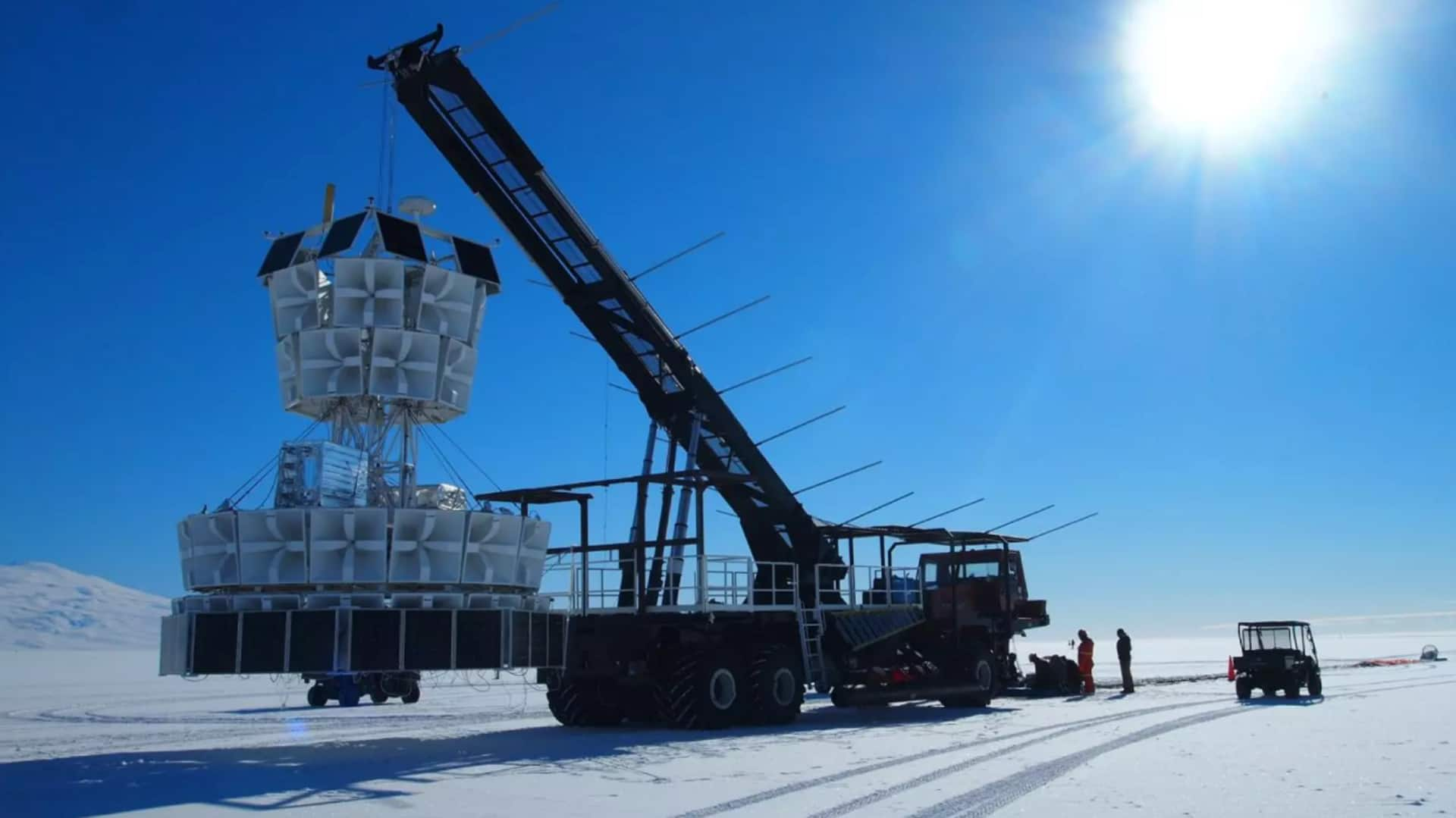
Strange radio signals under Antarctic ice challenge known particle physics
What's the story
Scientists have detected strange radio signals coming from beneath the Antarctic ice, challenging our current understanding of particle physics. The signals were first recorded by NASA's Antarctic Impulsive Transient Antenna (ANITA) instrument between 2016 and 2018. Now, a new study published in Physical Review Letters sheds light on this ongoing mystery.
Instrument function
What is ANITA?
ANITA, a suite of 24 radio antennas mounted on a NASA balloon, floats 40km above Antarctica. The instrument is designed to study cosmic events by detecting radio waves entering the atmosphere. Its location was chosen for minimal interference from other radio signals. Most waves detected by ANITA come from above, but the strange signals detected in 2016 and 2018 were different as they originated below the surface of the ice.
Signal origin
Signals likely not neutrinos, says researcher
The strange signals detected by ANITA appear to have traveled through thousands of kilometers of bedrock before reaching the instrument. This is puzzling because the rock should have absorbed these signals, yet they persisted. Stephanie Wissel, an associate professor of physics and member of the ANITA team, said that while they don't know what these anomalies are, they're probably not neutrinos.
Particle investigation
Why were neutrinos suspected?
Neutrinos, nearly massless subatomic particles with no charge, were the prime suspects behind these strange signals. They are abundant in the universe and emitted from high-energy sources like the sun or cosmic events such as supernovas. ANITA is one of the few neutrino detectors capable of capturing so-called ice showers, radio waves released when neutrinos interact with ice.
Neutrino interaction
What are air showers and their relevance?
When a type of neutrino, called a tau neutrino, collides with dense Antarctic ice, it releases a secondary particle called a tau lepton. This causes charged particles to emit another type of radio wave burst, which ANITA's antennas are also designed to detect.These bursts, known as air showers, are part of what ANITA's antennas are designed to detect, although the exact role of distinguishing between air and ice showers in tracing particle origins is not detailed in the source.
Ongoing investigation
Signals don't match any known source
Despite extensive analysis and comparison with mathematical models and simulations, researchers couldn't trace the "anomalous signals" back to any known source or typical neutrino interactions. They also compared these signals with other detectors like IceCube and the Pierre Auger Observatory, but found no similar radio waves. This has led scientists to rule out what was once thought to be the most likely explanation: that these radio waves were caused by neutrinos.